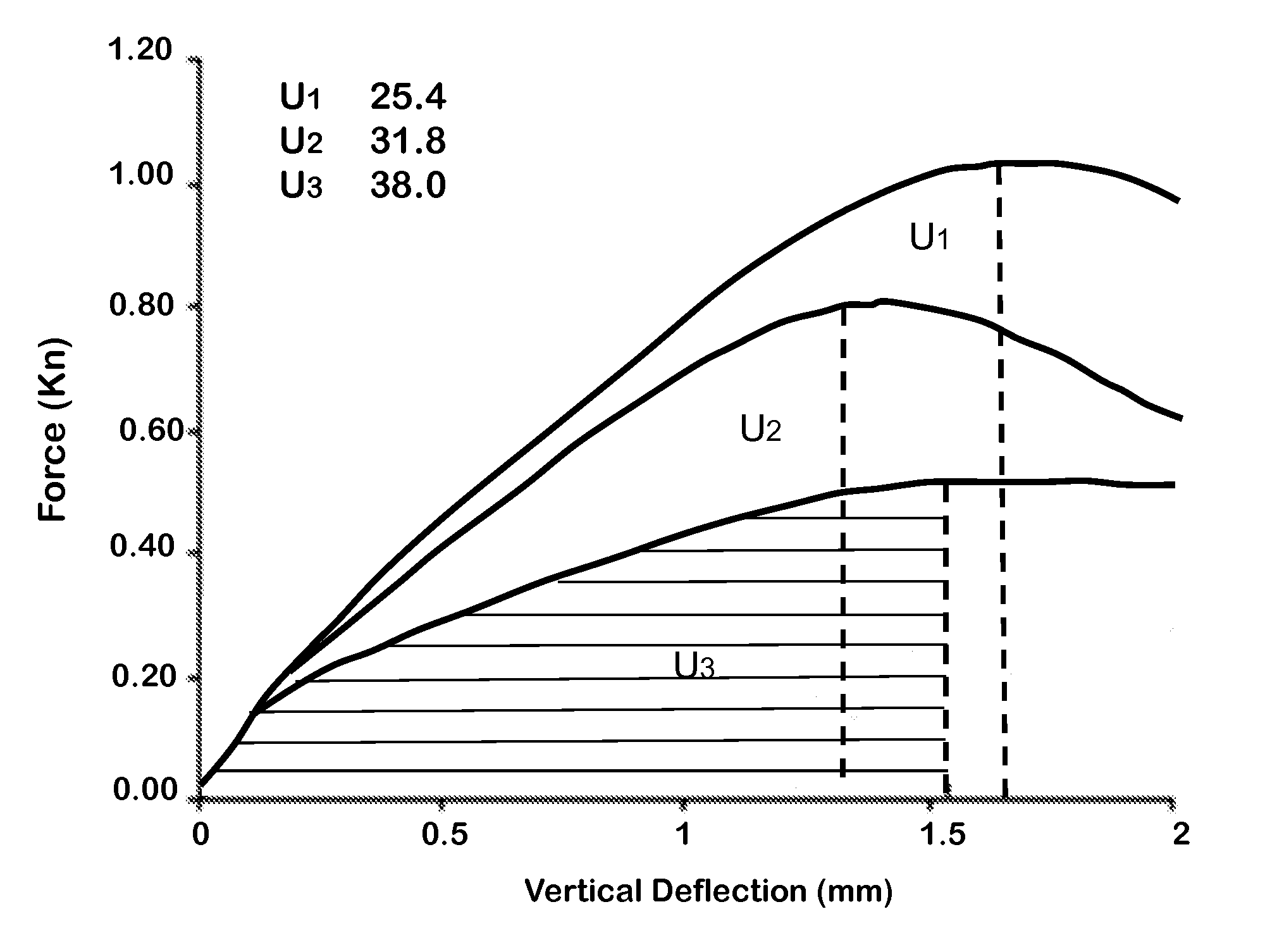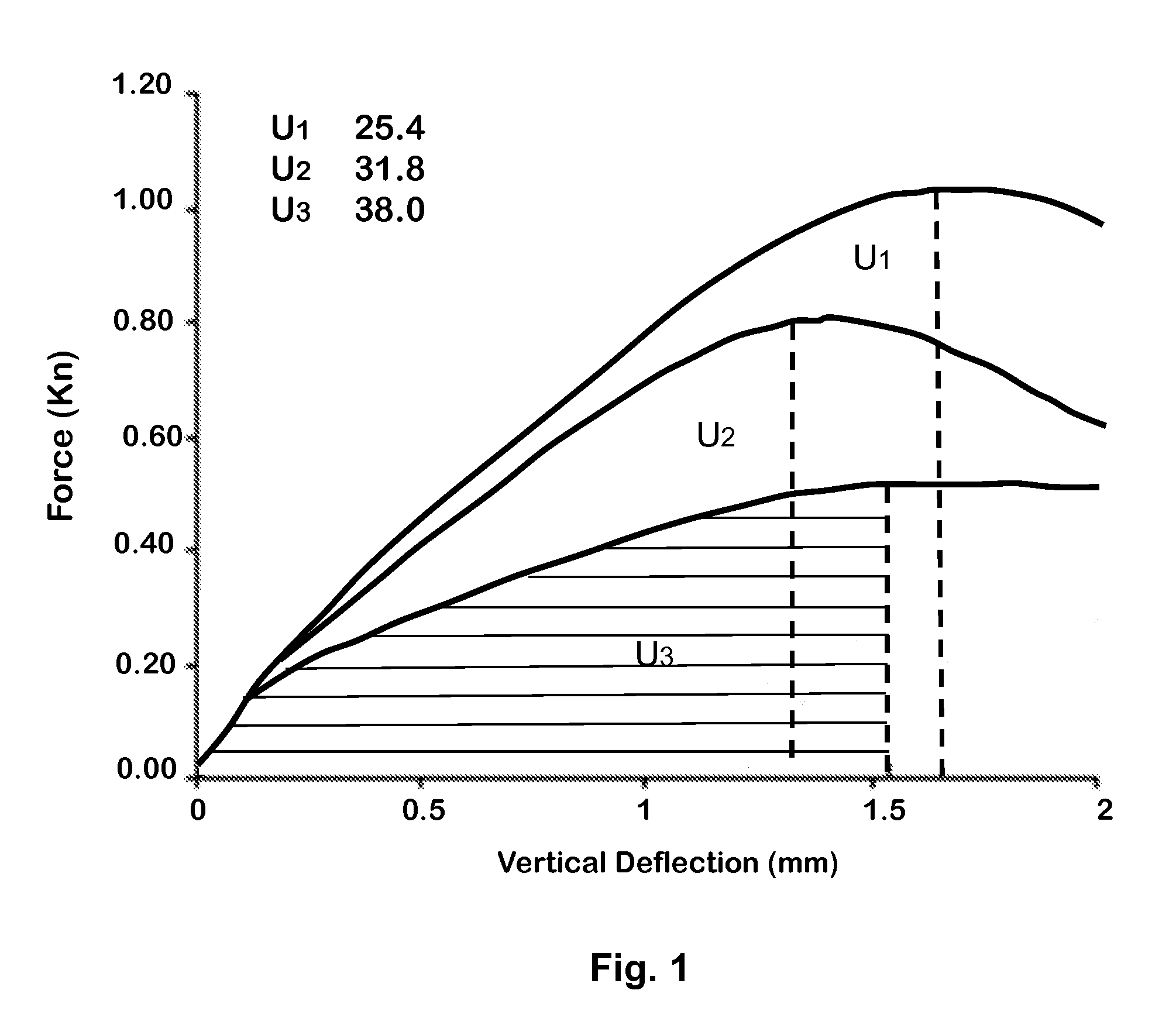Wet Process for Recycling Asphalt Shingle in Asphalt Binder for Asphalt Paving Applications
a technology of asphalt paving and asphalt binder, which is applied in the direction of roads, coatings, roads, etc., can solve the problems of increasing the cost of grinding and the increase of the grinding step, so as to reduce the mixing time, enhance the blending, and increase the surface area
- Summary
- Abstract
- Description
- Claims
- Application Information
AI Technical Summary
Benefits of technology
Problems solved by technology
Method used
Image
Examples
example 2
Recyclable Materials
[0034]RAS input streams from construction and demolition processing plants are generally collected over a large geographic area (e.g., statewide), thereby averaging the variation among different types of RAS, and normally providing a relatively consistent product. For the asphalt binder experiments, RAS was taken either from tear-off shingles collected in Missouri (referred to as TMO), or from manufactured shingles collected in Maine (referred to as MAME). For the asphalt mixture experiments, RAS was obtained from Texas and Illinois.
[0035]The recycled asphalt waste material was ground into ultrafine particles at room temperature using a Pulva-Sizer® hammer mill operated at high rotational speed, approximately 9,600 rpm. The particle size distribution of the processed RAS was characterized by laser diffraction. The processed RAS samples were analyzed using a Beckman Coulter particle size analyzer (LS13 320) operated in wet mode. Approximately 80% of the processed ...
example 3
Materials for Binder Experiments
[0036]The Performance Grade (PG) of asphalt cement is based on two factors: traffic levels and pavement temperature. The PG grading system gives two numbers, the first of which represents the high pavement temperature and the second of which represents the low pavement temperature (both measured in degrees Celsius). For example, PG 64-22 denotes a high pavement temperature of 64° C., and a low pavement temperature of −22° C. By convention, these temperatures are given in 6-degree increments. The high temperature pertains to the effects of rutting, and the low temperature pertains relates to cold temperature and fatigue cracking.
[0037]Prototype testing used two types of virgin asphalt binders, one classified as PG 64-22 and one classified as PG 52-28 according to Superpave specifications.
[0038]Asphalt binder blends containing virgin binder and the ultrafine RAS were prepared at proportions of 10%, 20%, and 40% RAS by weight of the binder. 500 g of virg...
example 4
Tests Made in the Binder Experiments
[0040]The binders in Table 5 were tested to determine the effects of RAS modification on rheological properties, molecular and fractional compositions, and binder compatibility and stability. The tests were: rheological and Superpave binder testing, confocal laser-scanning microscopy (CLSM), cigar tube tests, and high-pressure gel permeation chromatography (HP-GPC).
PUM
| Property | Measurement | Unit |
|---|---|---|
| Temperature | aaaaa | aaaaa |
| Temperature | aaaaa | aaaaa |
| Temperature | aaaaa | aaaaa |
Abstract
Description
Claims
Application Information
 Login to View More
Login to View More - R&D
- Intellectual Property
- Life Sciences
- Materials
- Tech Scout
- Unparalleled Data Quality
- Higher Quality Content
- 60% Fewer Hallucinations
Browse by: Latest US Patents, China's latest patents, Technical Efficacy Thesaurus, Application Domain, Technology Topic, Popular Technical Reports.
© 2025 PatSnap. All rights reserved.Legal|Privacy policy|Modern Slavery Act Transparency Statement|Sitemap|About US| Contact US: help@patsnap.com



